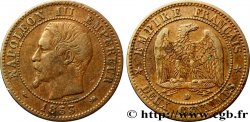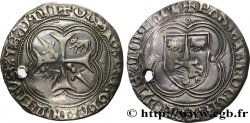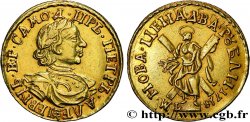Live auction - fme_930848 - SECOND EMPIRE Médaille, Hommage de la Ville de Paris à l'empereur Napoléon Ier, refrappe
Чтобы принять участие в торгах, вы должны войти в систему и стать подтвержденным участником аукциона. Войдите, чтобы сделать ставку. Ваш аккаунт будет подтвержден в течение 48 часов. Не ждите до закрытия торгов, чтобы зарегистрироваться.Сделав ставку на данный товар, вы вступаете в юридическое соглашение на покупку выбранного товара и нажатием кнопки «Сделать ставку» подтверждаете принятие вами условий интернет-аукционов cgb.fr.
Ставка может бить сделана только в полном эквиваленте евро. Торги закроются согласно времени, указанному в описании товара, все ставки, сделанные после закрытия торгов, учитываться не будут. Не следует откладывать предложение вашей ставки до последнего момента, так как система может не успеть обработать вашу заявку, и ваша ставка не будет принята. Более детальную информацию вы найдёте здесь: FAQ по интернет-аукционам.
Все ставки победителей подлежат комиссии 18%.
Все ставки победителей подлежат комиссии 18%.
| Оценить : | 180 € |
| Цена : | 115 € |
| Максимальная предлагаемая цена : | 130 € |
| Конец торгов : | 17 December 2024 14:49:22 |
| Участников : | 4 Участников |
Тип Médaille, Hommage de la Ville de Paris à l'empereur Napoléon Ier, refrappe
Дата: (1854)
Монетный двор / Город: 75 - Paris
Металл: bronze
Диаметр: 77 mm
Ориентация осей монеты: 12 h.
Гравер OUDINÉ Eugène-André (1810-1887)
Вес: 200,77 g.
Век: lisse + corne BRONZE
Пуансон: corne BRONZE
Комментарии о состоянии
Patine hétérogène avec des taches d’oxydation. Présence de traces d’usure, quelques coups et rayures
Ссылки в каталоге: :
Лицевая сторона
Аверс: легенда: IN NEPOTE REDIVIVUS.
Аверс: описание: Devant un temple, apothéose de Napoléon 1er sur un quadrige montant vers le ciel, précédé de l'aigle impérial tenant la foudre entre ses serres, couronné par l'Immortalité et guidé par la Renommée tenant une palme dans chaque main ; au bas, de gauche à droite : la France levant les bras au ciel, le rocher de l'île de Sainte-Hélène, le Désordre poursuivi par la Justice surgissant de derrière un autel. Signé : E.A. OUDINE / INGRES PINXIT. Poinçon visible à 11 heures : C/B-A.
Аверс: перевод: Renaissant en son neveu.
Обратная сторона
Реверс: легенда: (FLEUR) A. L’EMPEREUR. NAPOLEON. PREMIER. LA. VILLE. DE. PARIS. (FLEUR) - MDCCCLIV À L’EXERGUE FLUCTUAT NEC MERGITUR.
Реверс: Описание: Les armes de la ville de Paris supportées par des allégories ailées, surmontant la devise. Signé : E.A. OUDINÉ F. Poinçon visible à 12 heures : C/B-A.
Комментарий
Médaille conservée dans une boîte bleue.
La médaille fait également partie des collections du Musée du Louvre : https://collections.louvre.fr/ark:/53355/cl010465369.
Visibilité d’un poinçon B.A sur les deux faces de la médaille.
La médaille fait également partie des collections du Musée du Louvre : https://collections.louvre.fr/ark:/53355/cl010465369.
Visibilité d’un poinçon B.A sur les deux faces de la médaille.








 Cообщить об ошибке
Cообщить об ошибке Распечатать страницу
Распечатать страницу Отправить мой выбор
Отправить мой выбор Задать вопрос
Задать вопрос Consign / sell
Consign / sell
 Информация
Информация















